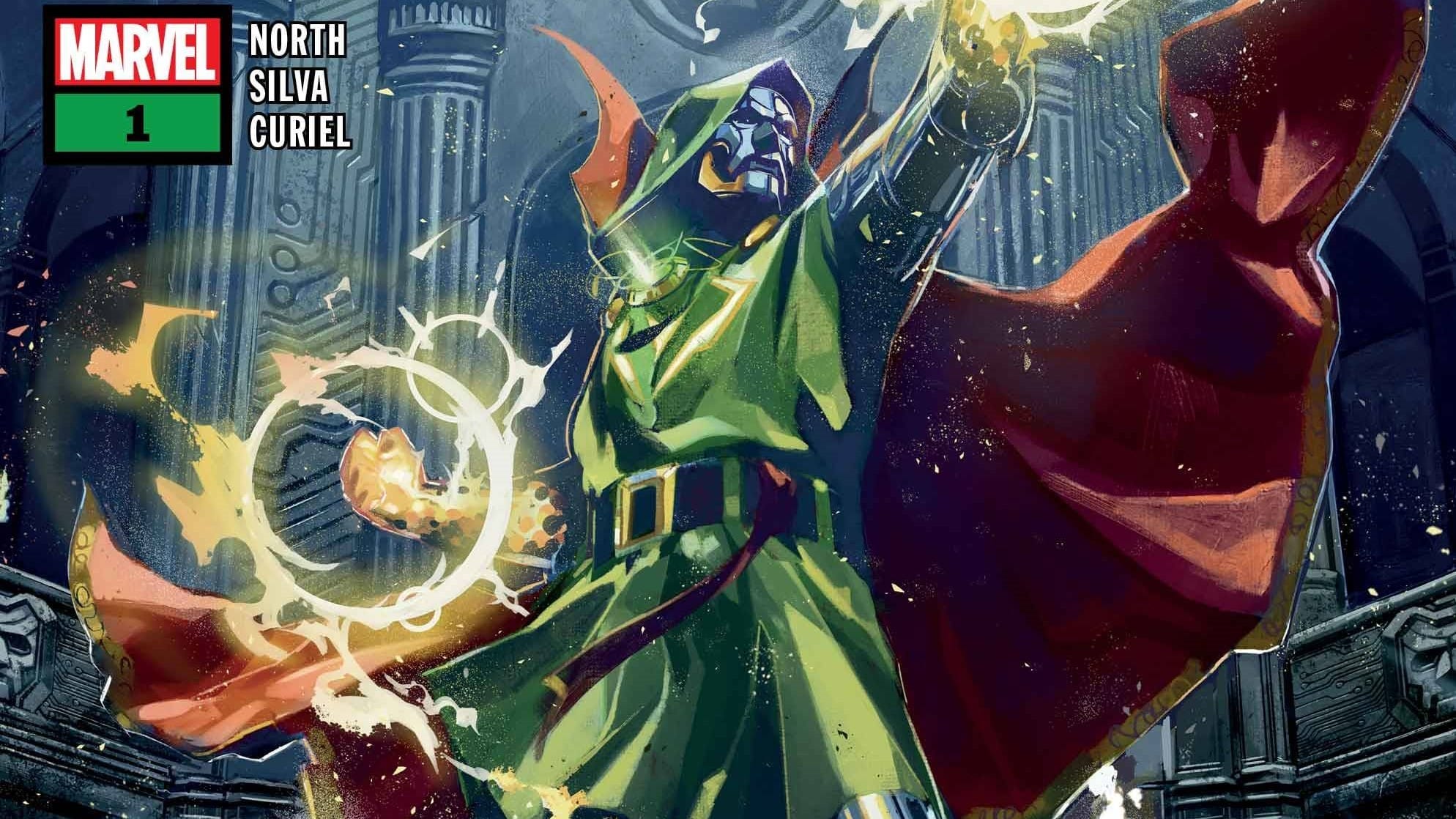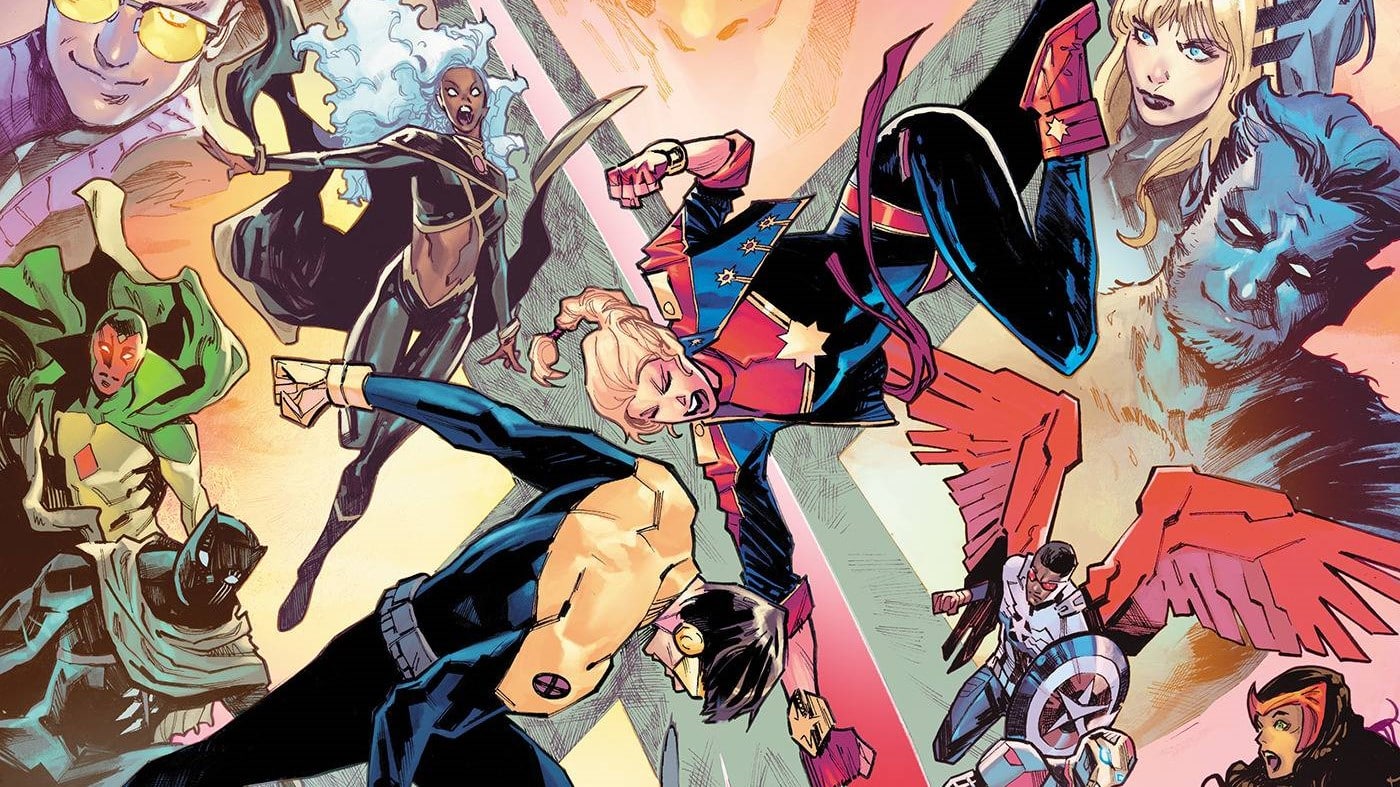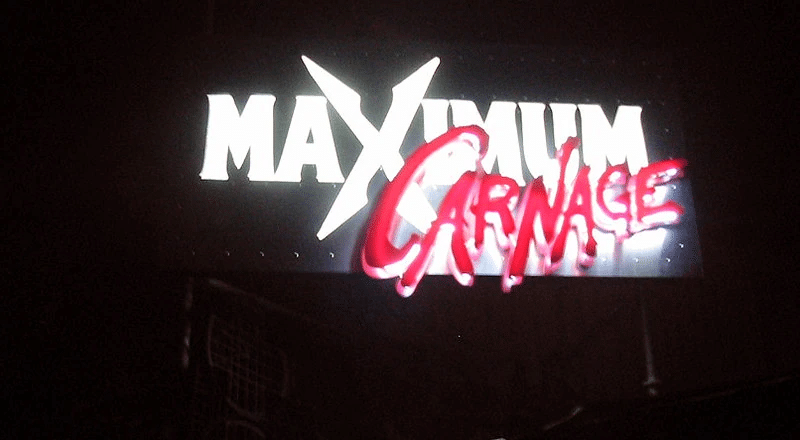Hello friends and readers and thank you for check out another week of Marvel Minutiae here at Marvel Files! This week we’re covering Spider-Man stuff galore as Christina Eddleman looks at Gwen Stacy #1 and Spider Correspondent Tony Thornley tackles Amazing Spider-Man #39. Starting us off is Rob Secundus’s extended look at the Mother of Demons—Lilith.
Spirit of the Ghost Rider: Mother of Demons
Spirit of the Ghost Rider: Mother of Demons made me feel a lot of things.
I have wanted to get into Ghost Rider for years, but I kept delaying and delaying for other reading projects. Above all else, this comic made me feel tremendously excited to finally start that Ghost Read, and particularly to catch up on the current status quo, in which Johnny Blaze is the king of Hell.
One thing I never felt, though this one-shot features a half dozen intermingling plotlines, was confused. It’s a good jumping on point for Marvel’s infernal characters, as it clearly introduces most of their status quos.
I also felt delight; Mephisto being condemned to Las Vegas is fantastic, as is the new Spirit of Corruption inhabiting Danny Ketch, and Jack O’Lantern is hilarious. I love the Hellish Game of Thrones being played among Marvel’s demons and the exploration of the nature of the 616’s afterlife, a fascinating corner of the universe.
And, for just a moment, I felt dread. The Blaze sequence is the rare story that tackles temporality and The Last Things thoughtfully; it very easily communicates the horror of eternity and being removed from time. We really feel the psychological effect of experiencing a moment which might be centuries.
But I wanted to talk about SotGR: MoD not because of the comic as a whole, but because of its opening pages, which compose a most disappointing scene. To understand my complaint, you need to know something about Lilith, so I’m tagging in my Times Immortal writing partner Zach Rabiroff, for his expertise on the relevant Midrash:
What’s that? Did somebody mention Lilith Midrash? Well, don’t mind if I do. Lilith’s presence in Jewish mythology goes back to an uncertain time in the distant past: scholars suspect, but have never been able to prove, that she’s connected to ancient Sumerian and Akadian demons, representing feminine forces of dubious nature. Her first clear, attested appearance is in a Medieval text called The Alphabet of Ben Sirach. Here, we see her memorably portrayed as the first wife of Adam, created alongside him from the soil of the earth, rather than taken from his rib like the later Eve. And unlike the more compliant and wifely Eve, Lilith was born with a streak of independence and sexuality that was flatly alarming to old-fashioned Adam. Indeed, when it came to fruitful multiplication, Lilith was, uh…tough to top, as it were:
Adam and Lilith immediately began to fight. She said, ‘I will not lie below,” and he said, “I will not lie beneath you, but only on top. For you are fit only to be in the bottom position, while I am to be the superior one.” Lilith responded, “We are equal to each other inasmuch as we were both created from the earth.” But they would not listen to one another. When Lilith saw this, she pronounced the Ineffable Name and flew away into the air.
Alphabet of Ben Sirach 78: Lilith
So while Lilith’s reputation in traditional Judaism has been ambivalent at best, this willful agency and sexual independence has led to her revisitation as something of a feminist icon in more recent centuries. From the novel Lilith by pioneering 19th century fantasy author George McDonald, to Jungian analyses of the feminine self, she has come to be embraced as a rebel against patriarchal oppression at least as often as she’s pilloried for her disobedience. So seeing her story in Eden rewritten to be about demonic infiltration, even if it’s rooted in ‘70’s Marvel continuity, feels a bit retrograde. Anyway, I’ll just show myself the door.
Zach sums up the core problem with the change nicely. I just have two further points before we conclude.
The first: the deviation from the original story is entirely unnecessary. To my knowledge, the character known as “Lilith” in the Marvel universe only had loose ties to the mythological figure: her name and her epithet, the Mother of Demons. N.B. that I’m not familiar with the relevant material, but google indicates she was conceived as an Atlantean sorceress and later treated as a generic demon. This story retcons 616 Lilith to be Midrash Lilith, then retcons the latter’s story to concern a demon who tricks Adam into demo-making sex rather than a woman who refuses to submit to a man. This comic could have avoided the original entirely or chosen to incorporate it more faithfully. I cannot conceive of a reason to take the specific route it took; maybe to set up “her thing is sexy pregnancy stuff” for the later scene in which she sexily/ horribly/ grotesquely gives birth to herself, a beat which made me wonder if I had accidentally opened not the actual Marvel Ghost Rider comic released this Wednesday, but some strange, dark corner of DeviantArt [Ed. Note: It’s a whole bunch for folks]?
The second is that while Lilith and her story might be obscure to the general public, she is not obscure to comics readers. Any use of mythical-Lilith in a comic invites comparison to “the Parliament of Rooks, one of the most famous issues of the not exactly obscure SANDMAN. It is likely that readers will know that comic, and thus that story, and there is no way in which this story does not come up short in that comparison.
Soon I’ll be reading a lot more Ghost Rider, and I’m certain I’m going to enjoy the rest of this story. But I’m going to let out at the very least one wistful sigh whenever the Mother of Demons appears [Ed. Note: Meanwhile I will raise a concerned eyebrow].
Robert Secundus is an amateur-angelologist-for-hire.
Amazing Spider-Man #39
Ever since Spectacular Spider-Man #6 in 2017, Peter Parker and Jonah Jameson have had a completely new relationship, with Jonah filling several different support roles for Peter while trying to make up for years of antagonism. That finally brings things to a head for this issue, where the two actually address some of the deeper issues that they’ve ignored since then.
It’s nearly impossible to argue against the fact that Jonah is the best supporting character in the Marvel Universe. This is a character that has a fierce streak of honor, who genuinely feels that everything he does is the right thing. He’s stood up to villains, and he’s faced disasters with fierce determination. Frankly, it’s amazing that he’s never carried any sort of series on his own.
His relationship with Peter has gone through its ups and downs. This issue covers all of those, from Jonah’s false accusations of threats and menaces to Peter’s mean-spirited (though not undeserved) pranks. Even when he’s completely shifted towards an ally he hasn’t totally been helpful (remember, he was the person who outed Peter to the Carnage-powered Norman Osborn at the end of Dan Slott’s Amazing run).
So Peter Parker and Jonah Jameson are stuck in a room together to hash things out. Following up on last issue’s introduction of Jonah’s new job at clickbait hungry news site Threats & Menaces [Ed. Note: A name that is maybe too good], we see the introduction of the J. Jonah Jameson podcast, and it’s first guest, the Amazing Spider-Man! Yes, it’s just an excuse to force them into a room to talk and they do.
On the positive, it forces them to talk out their issues. They lay everything out on the table (which is illustrated fantastically by Coello with several splashes). But that’s where the story falls apart. Where this should be an emotional heart to heart to resolve years of hurt these two have inflicted upon each other, the whole conversation is played for laughs.
Now yes, this is Spider-Man, there needs to be humor here, but the straight jokey tone really doesn’t land. I described the series at its best as a superhero sitcom last issue, but Spencer makes a swing and a miss here. It IS funny, and does some great cringe comedy. However, this conversation requires an appropriate emotional weight that this issue doesn’t even touch.
I hope we can see this revisited, especially since the conversation was interrupted at the end of the story. However, after 20 pages, I don’t know that I trust Nick Spencer to be the one to do it.
Tony Thornley once woke up in the middle of the night, saw one of his Spider-Man action figures on display and involuntarily whispered “Spider-Man!” His roommate was also awake at that moment. It was awkward.
Gwen Stacy #1
Gwen Stacy is many things to many people [Ed. Note: She is also many people], but in Gwen Stacy #1 she is pure nostalgia. Who was Gwen before she met Peter Parker in The Amazing Spider-Man #31? While in her first appearance Gwen is a fairly one-dimensional character, the “Beauty Queen of Standard High”, Gage seeks to explore Gwen’s character while creating her backstory.
Nauck’s art fits this story well, capturing Gwen’s youth, energy, and expressiveness. Moments like the thug knocking Gwen’s snacks free from a vending machine or Gwen smashing a cupcake in the face of a jock who felt entitled to her body are timed well, adding some comedy an otherwise straightforward script. Nauck’s art is also complemented nicely by Roseberg’s lovely colors.
This issue has moments for both the seasoned and casual Spider-Man and Gwen Stacy fan. A reference to the death of Ben Parker, Yuri Watanabe before she became a captain or Wraith, mention of Flash Thompson’s football career, and several Spider-Man villains. Most of these references, however, are not central to Gwen’s story but act as set dressing to place our story in a particular time in continuity.
While this first issue was enjoyable and I would recommend it to anyone already a Gwen Stacy fan, it did not particularly wow me. The additional shorts and paper doll collection in the back of the issue were fun bonuses (I’d definitely read The A-Gwen-Gers). Gwen Stacy has four more issues to make me a fan of 616 Gwen Stacy, but I’m not sure I’m there yet.
Christi Eddleman is the world’s first Captain Kate Pryde cosplayer and co-host of Chrises On Infinite Earths.









